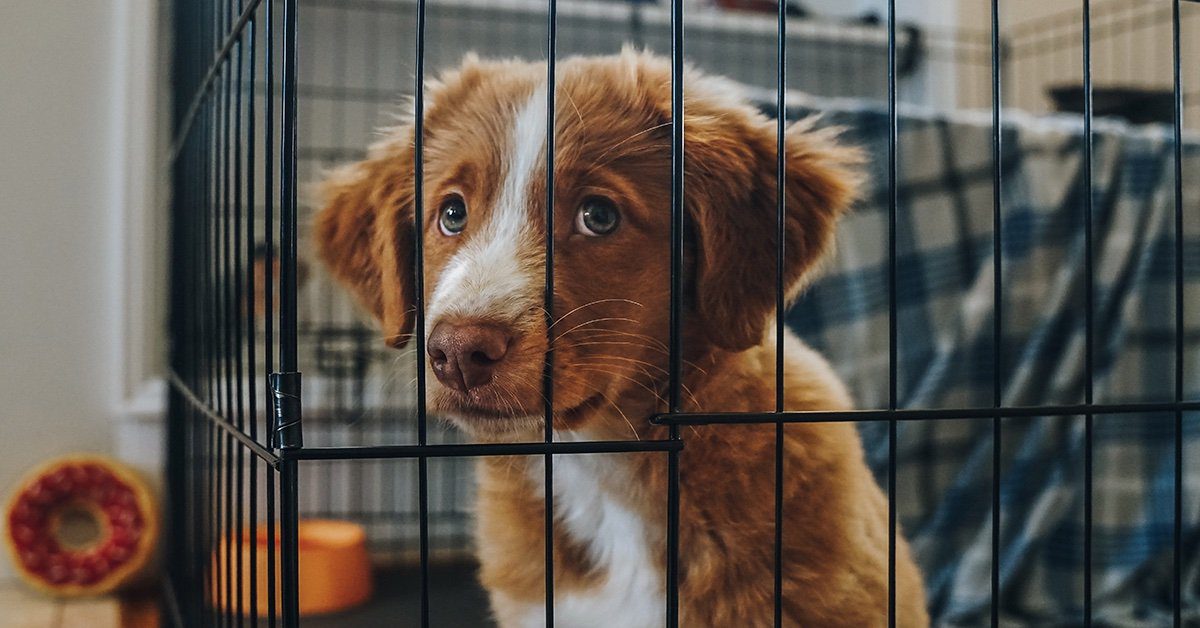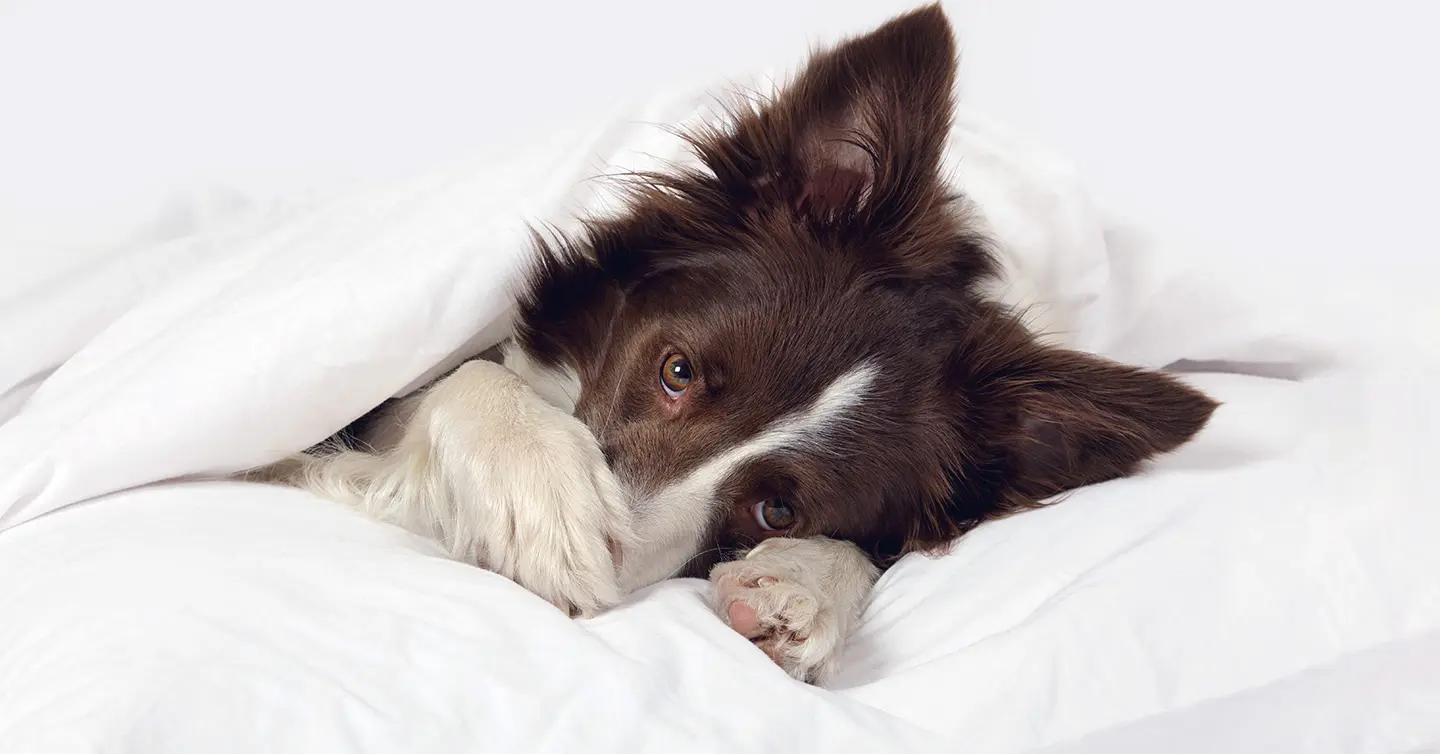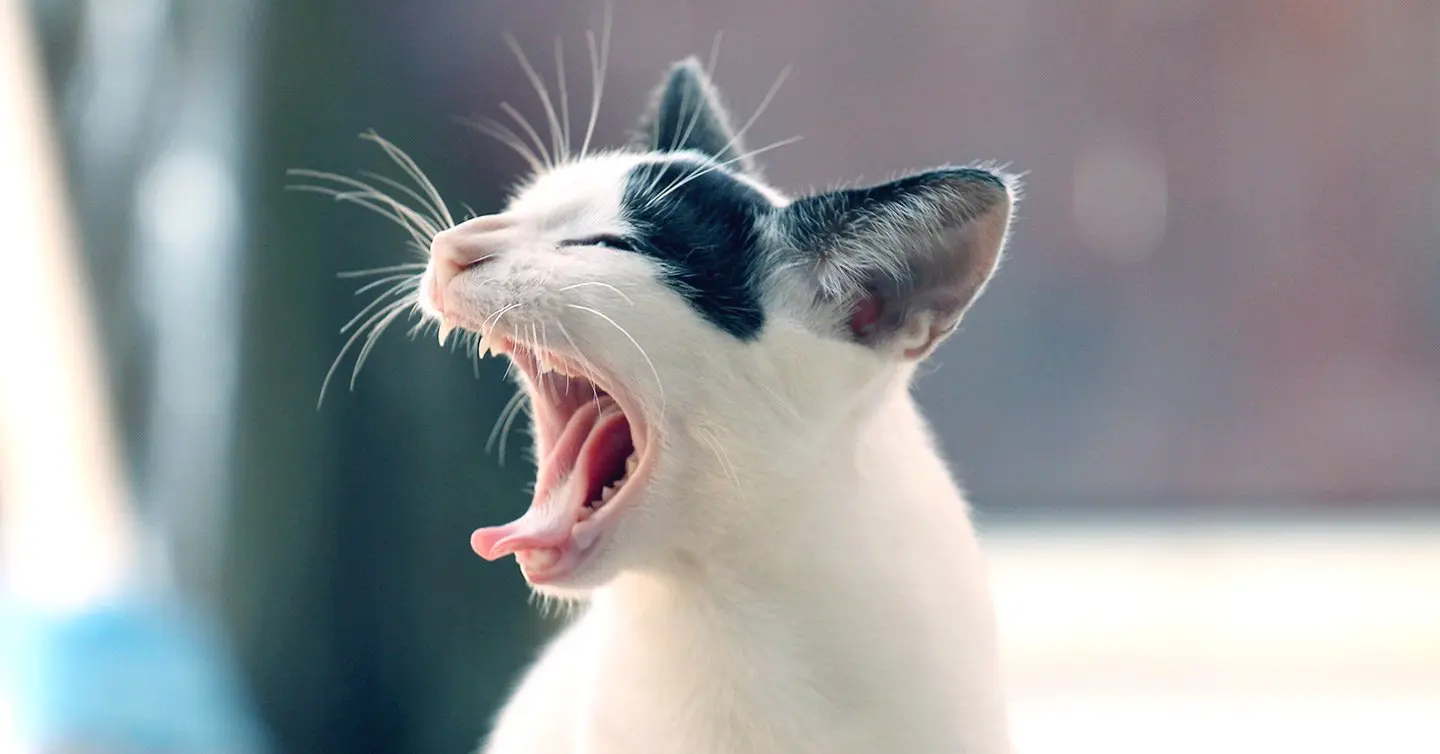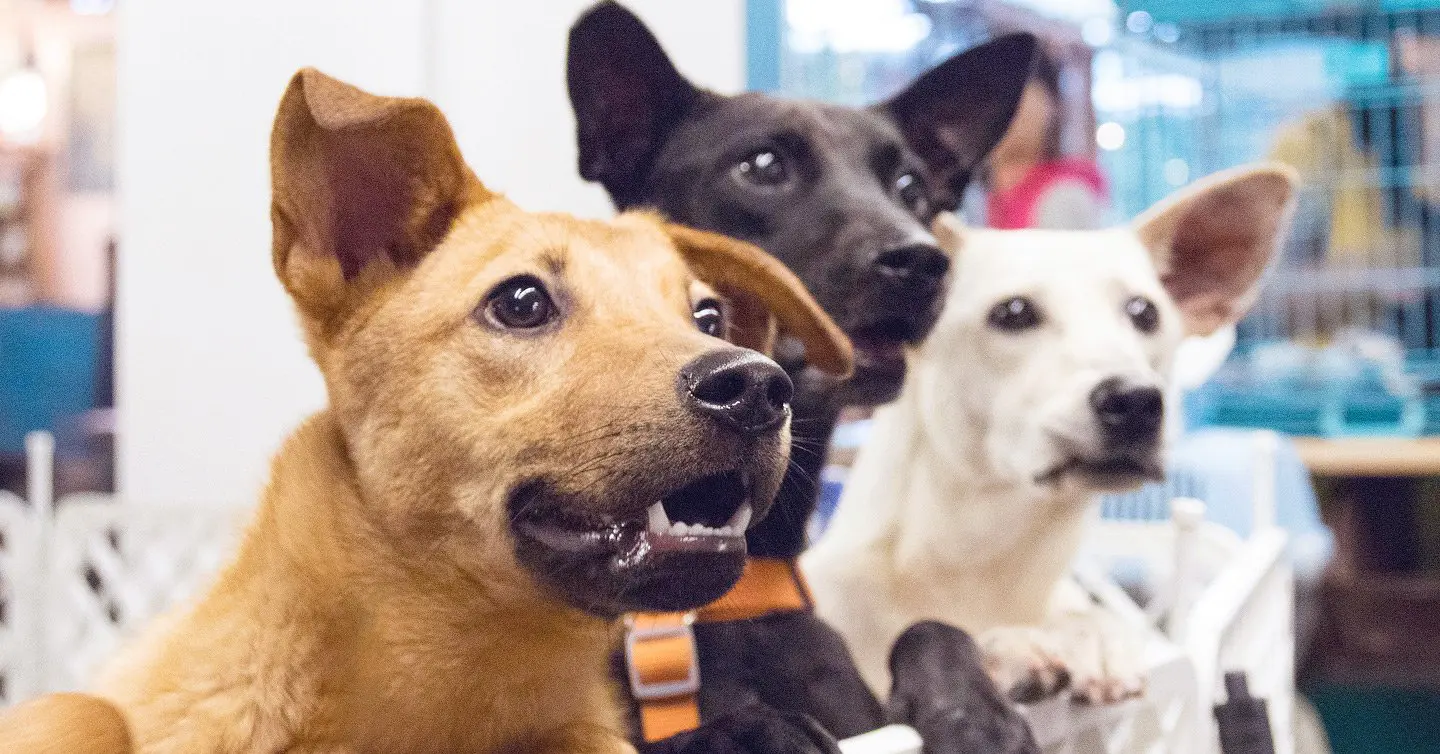Key Points
- Crate training your puppy has many benefits, including providing a safe space, allowing you to keep an eye on them while you’re busy, and more.
- Crate training is a slow and gradual process that requires several steps, positive reinforcement, and patience.
- Don’t leave them alone in their crate for long periods since they will need to use the bathroom.
You’ve brought your new puppy home, and you couldn’t be happier. After all, there’s nothing more fun than puppy kisses, snuggles, and playtime.
Of course, besides all the fun and excitement, you’re also crossing items off your new puppy checklist. From keeping up with their vaccination schedule to the thrills of potty training, there’s so much to do in so little time.
During this crucial phase of puppyhood, giving your dog a place to call their own is essential, and that’s why crate training is so essential. Learning how to crate train a puppy provides your new family member with a safe space and gives you security and peace of mind when you’re out of the house.
This step-by-step guide will show you how to crate train a puppy and offer tips for success. Plus, we’ll answer some common questions you may have.
Benefits to crate training your pup
A dog crate, sometimes called a kennel, is a simple tool for confinement. It has four walls and a door — not all that different from a playpen.
This simple structure can offer several important benefits for you and your new puppy:

Safety: Crate training helps give your puppy a safe space to call their own. This allows them to have a place to feel relaxed and comfortable. Allowing your pup to create their own space and be comfortable even when you’re gone for a while can also help prevent separation anxiety as they age.
Visibility: Training your pup to relax and spend quiet time in a crate can help you keep an eye on them while you’re multitasking, cooking, or when you have company over. New puppies can be mischievous — so allowing them to cuddle up in their crate with a toy can help prevent them from getting into your shoes, wires, or other objects.
Travel: At some point throughout your new dog’s life, they’ll likely travel in the car, on a plane, or have a boarding experience. Whether you’re headed to the vet for your pup’s next vaccine or a daycare facility, working on crate training early on in life can help prepare your dog for these future experiences and make them more comfortable.
Bonding: Finally, one of the best benefits of crate training is that it allows you to work on training with your new puppy. This helps you create a closer bond between the two of you — and who doesn’t love that?
How to crate train a puppy in six simple steps
Although the crate training process isn’t overly complex, working through these steps with your puppy will take time, dedication, and patience.
Take things slow and let your pup dictate the pace, especially when you’re just getting started. Here’s how to crate train a puppy effectively — so the experience is pleasant for you and your pup.
Step 1: Choose the right crate
The first step to successful crate training is choosing the right crate for your puppy. There are two standard types of crates:
- Hard, plastic crates (sometimes called flight kennels)
- Great gear for airline travel
- Good for dogs that prefer to sleep in the dark
- Easy to clean up
- Wire crates
- Often collapsible, making storage easier
- May include a divider to separate the front and back of the crate
- Durable and long-lasting
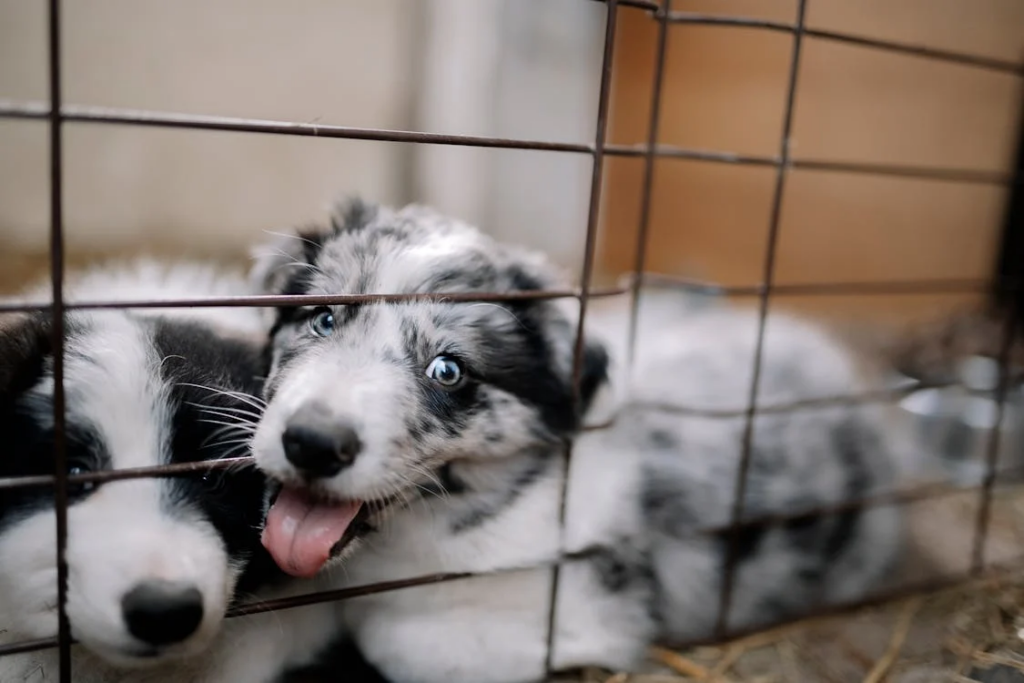
Either of these options can be effective for crate training, but choosing the right crate size is more important. Your dog’s crate shouldn’t be too small or too big.
Your puppy should be able to stand up, turn around, and lay back down in the crate, but it shouldn’t be big enough for your pup to have a separate bathroom area — otherwise, you’ll be cleaning up messes non-stop.
If you expect your puppy to grow a lot, you should look for a crate big enough to fit them as adults. However, blocking the back of the crate will reduce the chances of accidents. Some crates are adjustable and include dividers designed for this purpose.
Step 2: Decide what to put inside the crate
Typically, you’ll want to include a dog bed or blanket or opt for something more firm, like a towel or mat. There’s no right or wrong answer — it’ll depend on what works best for your dog. Some dogs may be comforted by a soft blanket, whereas others may be tempted to pee on it.
You can also add a toy or two to their crate so they have something to comfort them during the night.
Pro tip: When you collect your puppy, take a blanket or toy with you to get the scent of the pup’s mom or littermates onto it. This will provide even more comfort to them and could help with crying.
Step 3: Set up your crate space
Once you have the right crate for your puppy, you’ll want to choose a suitable location in your house or apartment to keep it.
You should put the crate in a location that’s quiet enough for your pup to rest but isn’t too isolated, such as in the corner of your living room or kitchen. Pick a location where your family spends a decent amount of time.
It’s also important to consider how close the crate is to your bedroom, especially for young puppies, so you can hear if your dog whines or barks to go to the bathroom in the middle of the night. Proximity to the backyard or front door for bathroom trips can also be helpful.
Step 4: Introduce your dog to the crate
As you begin, have training tools on hand, including treats and some of your puppy’s favorite toys.
With the crate in place, coax your dog inside and let them explore at their own pace. If possible, the crate door should be open and secured — or you might decide to remove it altogether. You just don’t want the door to move and startle your pup.
Some dogs might be curious and immediately interested in the crate, while others may not. If your pup shows interest in the crate, reward them with a treat, toy, and lots of praise. Continue to reward them for any progress they make, as this allows them to learn more efficiently.
Remember, you want your puppy to create a positive association with the crate, so if they aren’t curious enough to venture inside right away, they might just need more time. Only physically place them in the crate as a last resort.
Step 5: Practice closing the door
After short training sessions of crate introduction, you’ll want to prepare your pup for longer periods spent inside.
Start by getting your puppy to lay down in the crate, rewarding them with their favorite treats, or giving them a chew toy to keep them busy. Then, try closing the crate door while your dog eats or plays and open it after a short period of time.
Step 6: Work up to longer periods
If your dog tolerates staying in the crate with the door closed (meaning they stay relaxed and calm), you can build up to longer periods.
If they can’t remain calm when in the crate and instead excessively whine or bark, you’ll want to decrease the time until they’re more comfortable.
You might also practice leaving the room and returning during these longer periods. Again, take this process very slowly, and as your dog remains calm in the crate without you in sight, you can increase the length of time you’re gone.
Practice leaving your dog in the crate alone
After your puppy becomes comfortable staying in the crate for longer periods without you in the room, you can take things up a notch in the following ways:
Leave your puppy in the crate at night
When you leave your dog in the crate at night, you should always take them for a potty break right before they go in. You can reward them for going into the crate and even give them a toy to keep with them.
Keep the crate close to your bedroom so you can hear your dog if they need to go to the bathroom in the middle of the night. It’s important to remember that puppies can’t hold their bladders for very long, so they’ll need to go out every few hours.
You can remove their water dish a few hours before they go to bed to reduce the likelihood of them having to potty multiple times throughout the night.
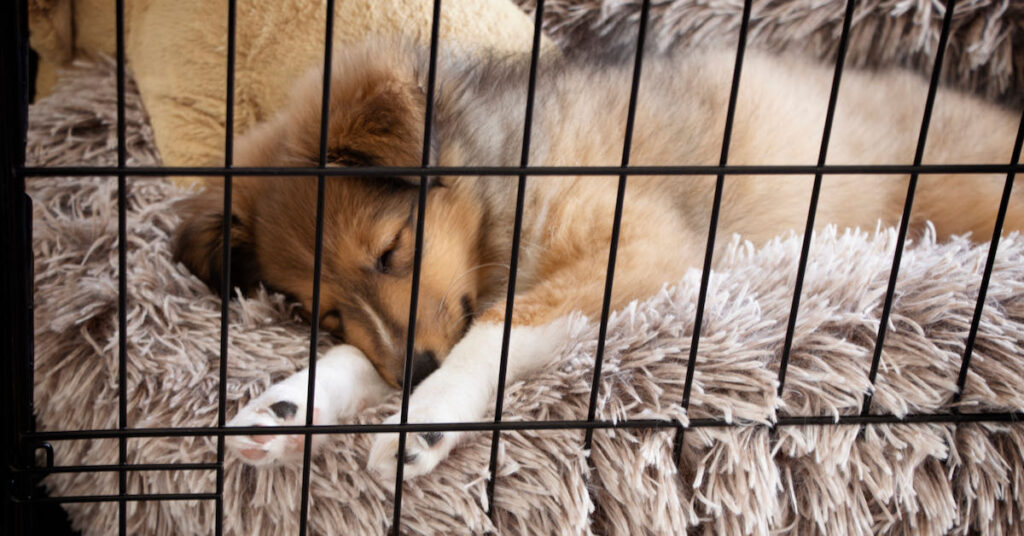
As your puppy gets older, they may be able to spend more of the night in the crate, and eventually, you may be able to move the crate to another location within your house or apartment.
Leaving your puppy in the crate while you leave the house
Similarly, you can also practice leaving your puppy in the crate for short periods when you leave the house. However, you’ll want to keep these training sessions shorter since you can’t hear your dog whine or bark if they need a potty break.
Puppy crate training tips
Crate training doesn’t happen overnight. But, investing in training sessions with your puppy can create benefits for years to come. Here are some tips to help you through the process:
Don’t use the crate as a punishment
You always want your pup to have a pleasant association with the crate. Don’t force the process, try to take things too fast, or make your dog go into the crate for doing something wrong. These things will only set you back.
Don’t keep your pup in the crate for too long
Puppies need frequent potty breaks. So, if you keep your dog in the crate for too long, they may have an accident. You want to be able to use crate training as a potty training tool, not a hindrance.
As a general rule of thumb, you should take your pup to the bathroom before crate time, especially if they stay in it overnight or while you’re away from the house.
Make crate training fun for you and your pup
The best way to find success in crate training, and one of the best puppy training tips in general, is to reward your puppy frequently. This way, they develop a positive association with the crate.
Another great way to create this association is to play crate games. You might line up a trail of kibble to the crate or play a game of fetch where the toy lands inside the crate, and your dog has to retrieve it. These types of games can make the dog crate more approachable and fun.
Crate training requires time and patience — and despite your best efforts, your dog will still have potty accidents or sometimes whine. Be extra patient and attentive while your puppy is adjusting to their new home.
Want to ensure that you provide your new puppy with the best care possible? A Pumpkin Puppy Insurance plan can provide coverage for eligible vet bills in the future when unexpected illnesses or accidents happen.
